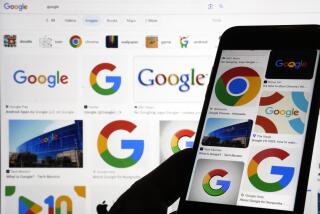Editorial: Thinking outside the cable box
Cable TV customers are fond of complaining about their ever-rising monthly bills, which now average almost $100. Although the main factor has been the growing sums of cash the cable operators have to fork over to NBC, ESPN and other networks for their programming, the operators themselves are demanding higher fees from consumers for the converter boxes that unscramble, record and display shows. According to the Federal Communications Commission, Americans pay an average of $231 a year renting pay-TV set-top boxes, with cable box fees almost tripling since the mid-1990s.
Worse, consumers have little choice when it comes to cable converter boxes. As part of a telecommunications-law overhaul in 1996, Congress required the cable industry to open their systems to set-tops made by competitors. That presented technical challenges, however, that cable operators have been less than enthusiastic about solving. And even when a solution was found, the industry continued to act as a gatekeeper over devices and technologies. As a result, with limited exceptions, consumers have been stuck with whatever their local cable operator offered, which has slowed innovation in program guides, digital recorders, the integration of online content and other key aspects of TV service.
This week, Federal Communications Commission Chairman Tom Wheeler unveiled yet another effort to create a secure way for device makers to connect to cable services and provide alternatives to the industry’s set-top boxes. The proposal wouldn’t dictate the technology used; instead, it would require cable operators to comply with a set of open standards for how information is transmitted and protected. The goal would be to allow companies to fully integrate the channels that consumers subscribe to on cable with other forms of entertainment on a single Internet-connected screen or device. Consumers would still have the option of the local cable operator’s box, but the difference is that it would be an option, not a prerequisite to getting cable programming.
If it worked, one obvious result would be that cable operators would face competition for the roughly $7.50 they collect each month per converter box, which should drive costs down for consumers. But just as important, there would be competition over how cable services are presented on screen. Today, the local cable operator controls the “user interface” for its programming, from the program guide to the playback controls on its DVR. With an open market, other companies would be able to offer alternative user interfaces. A good example is what Fanhattan did with its interface for Time Warner Cable, which offered viewers compelling new ways to browse for shows in addition to the usual time-and-channel grid.
The FCC is expected to vote next month whether to start a formal rulemaking on Wheeler’s proposal. And not surprisingly, the cable industry and its partners in Hollywood are resisting Wheeler’s proposal. Device makers would be able to emphasize some channels over others, which could hurt lesser-known networks, they argue, and consumers could be showered with intrusive ads. Just be patient, they say, because cable operators and TV networks are gradually rolling out more options for consumers.
The critics are right about one thing: The cable industry is, slowly but surely, giving customers the ability to watch TV on more devices without the need for a pricey set-top. In fact, a handful of cable executives have said they would like to be rid of set-tops once and for all. They have good reasons to do so: the boxes cost money to purchase and maintain, and the rapid advance of computing technology can make even a two-year-old box seem slow and outdated.
Nevertheless, Congress decided almost 20 years ago that cable operators shouldn’t be the ones controlling the evolution of set-top boxes. That market should be competitive. And rather than trusting cable operators to promote indie networks, limit consumers’ exposure to advertising and protect their privacy, it’s far better to let consumers decide such things for themselves in an open, competitive market.
Follow the Opinion section on Twitter @latimesopinion and Facebook
More to Read
A cure for the common opinion
Get thought-provoking perspectives with our weekly newsletter.
You may occasionally receive promotional content from the Los Angeles Times.










